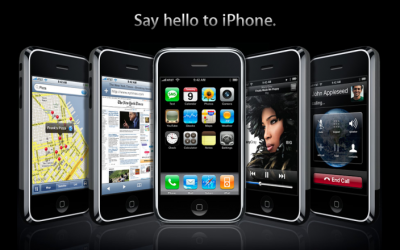Apple Bet Its Future On The iPhone

Before his testimony in the Apple vs. Samsung damages retrial, Phil Schiller emphasized the importance of the company’s smartphone, the iPhone, when he remarked that for Apple, the iPhone was a ‘bet the company’ product. “There were huge risks [with the first iPhone]. We had a saying inside the company that it was a ‘bet the company’ product […] We were starting to do well again in iPod […] Then here we’re going to invest all these resources, financial as well as people, in creating this product“.
Phil Schiller emphasized this by saying that during the early stages of the iPhone’s development, there were only about a hundred people working on the iPhone. Today, in contrast with those early days, almost everyone at Apple is working on the iPhone line.
Schiller made these comments during the Apple vs. Samsung damages (Apple accused its South Korean rival of infringing five Apple patents in 13 Samsung devices). The Court started the retrial this month with jury selection in the United States District Court for the Northern District of California. The jury is made of 2 women and 6 men.
In the retrial’s second day, Apple brought opening arguments asking for another $380 million (less than the $410 million that Apple was originally given) while Samsung stated that it needs to pay $52 million. Apple’s witnesses include touch screen experts, an Apple exec and also Samsung executives by way of deposition videos.
During the third day it was established (via the questioning of Julie Davis, an expert accountant that was hired by the Cupertino based giant) how much money Apple lost due to Samsung’s patent infringements and how much profit Samsung made. She mentioned that damages due to Samsung’s patent infringements should be $287 million.
MIT professor of marketing, John Hauser, analyzed how much value Apple’s patents add to a smartphone. His analysis shows that for a $199 smartphone, consumers are likely to pay another hundred dollars for features included in 3 Apple patents; these features are mostly touch screen related, such as the bounce back fx when the user is scrolling to the bottom of a web page.
The difference between how much Apple asks ($380 million) and how much Samsung says it owes Apple ($52 million) is based on how much Apple needs to get for royalties and how much profit Samsung made with the help of Apple’s patents. The two giants agree on how many units Samsung sold and how much revenue they brought to the South Korean company. Samsung however claims the profit was lower than Apple suggests, due to additional expenses such as marketing.
In Apple’s opinion, the $380 million figure reflects profits of $114 million that the company lost due to Samsung’s infringements but it also reflects the South Korean company’s profits of $231 million and royalties of about $35 million. Apple claims it would have sold about 360,000 units if Samsung wouldn’t have released smartphones that infrigned Apple’s patents. On the other hand Samsung claims that Apple should not get any money for lost profits, should only receive $52.7 million for Samsung’s profits and royalties of $28,452 (instead of $35 million) due to patents limitations.











